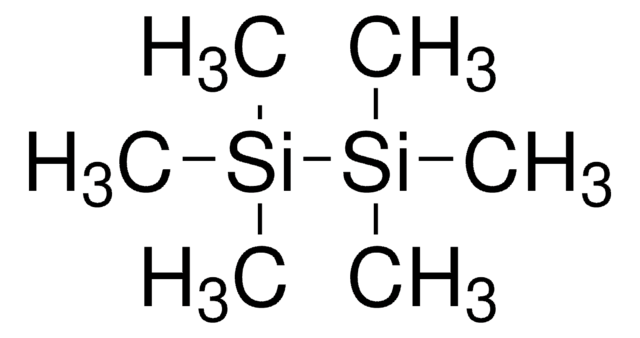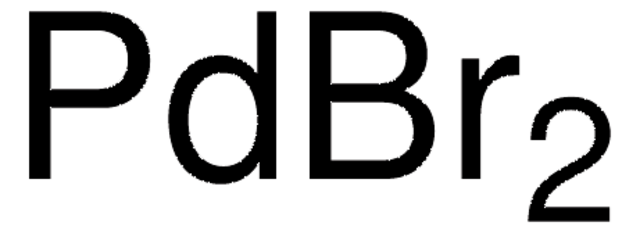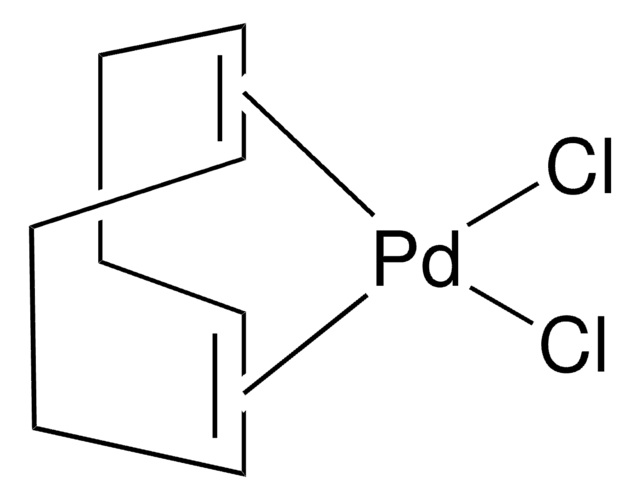339768
Tetrakis(acetonitrile)palladium(II) tetrafluoroborate
Sinónimos:
NSC 307191, Palladium(II) tetrafluoroborate tetraacetonitrile complex
About This Item
Productos recomendados
form
solid
Quality Level
reaction suitability
reaction type: Buchwald-Hartwig Cross Coupling Reaction
reaction type: Cross Couplings
reaction type: Heck Reaction
reaction type: Hiyama Coupling
reaction type: Negishi Coupling
reaction type: Sonogashira Coupling
reaction type: Stille Coupling
reaction type: Suzuki-Miyaura Coupling
reagent type: catalyst
core: palladium
reagent type: ligand
mp
230 °C (dec.) (lit.)
SMILES string
[Pd++].CC#N.CC#N.CC#N.CC#N.F[B-](F)(F)F.F[B-](F)(F)F
InChI
1S/4C2H3N.2BF4.Pd/c4*1-2-3;2*2-1(3,4)5;/h4*1H3;;;/q;;;;2*-1;+2
InChI key
YWMRPVUMBTVUEX-UHFFFAOYSA-N
General description
Application
Reactant involved in:
- Reactions where it plays a role as the metal source due to weakly coordinated acetonitrile ligands
Precursor for:
- Synthesis of dendritic SCS-pincer palladium complexes
- Palladium complexes of click ligands
- Dipalladium catalysts for use in Heck cross-coupling, Suzuki cross-coupling, and aldehyde olefination
signalword
Warning
hcodes
Hazard Classifications
Acute Tox. 4 Inhalation
Storage Class
11 - Combustible Solids
wgk_germany
WGK 3
flash_point_f
Not applicable
flash_point_c
Not applicable
ppe
dust mask type N95 (US), Eyeshields, Gloves
Elija entre una de las versiones más recientes:
¿Ya tiene este producto?
Encuentre la documentación para los productos que ha comprado recientemente en la Biblioteca de documentos.
Los clientes también vieron
Artículos
The Heck reaction is the palladium catalyzed cross-coupling reaction between alkenes and aryl or vinyl halides (or triflates) to afford substituted alkenes.
Nuestro equipo de científicos tiene experiencia en todas las áreas de investigación: Ciencias de la vida, Ciencia de los materiales, Síntesis química, Cromatografía, Analítica y muchas otras.
Póngase en contacto con el Servicio técnico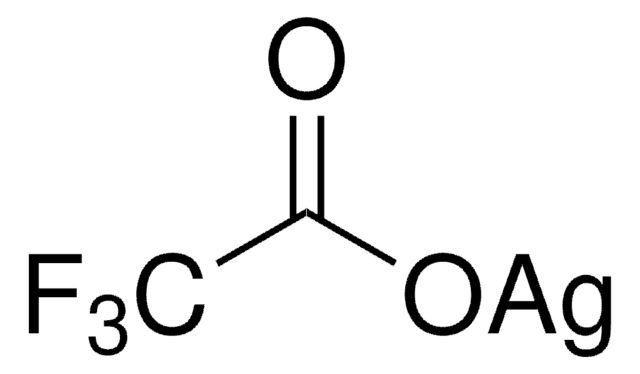

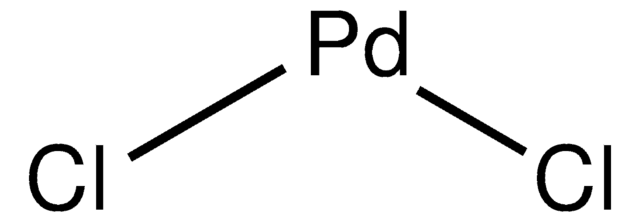
![1-clorometil-4-fluoro-1,4-diazoniabiciclo[2,2.2]octano bis(tetrafluoroborato) >95% in F+ active](/deepweb/assets/sigmaaldrich/product/structures/206/487/53d52ee5-ef71-4e9a-9bc8-938b68b98d5d/640/53d52ee5-ef71-4e9a-9bc8-938b68b98d5d.png)
![[Pd(OAc)2]3 reagent grade, 98%](/deepweb/assets/sigmaaldrich/product/structures/508/249/99a0ef2c-b77c-4d73-8ed9-0cca05b6b41f/640/99a0ef2c-b77c-4d73-8ed9-0cca05b6b41f.png)
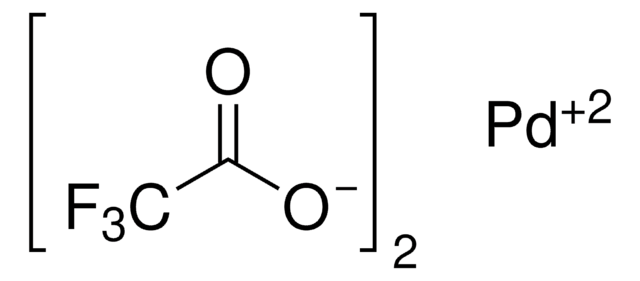
![[Pd(terpy)(MeCN)][BF4]2 ≥95%](/deepweb/assets/sigmaaldrich/product/structures/221/681/ebdc06b7-3b8d-48d4-8aae-08a856260f39/640/ebdc06b7-3b8d-48d4-8aae-08a856260f39.png)
![[1,3-Bis(diphenylphosphino)propane]palladium(II) triflate](/deepweb/assets/sigmaaldrich/product/structures/166/337/99b8a24a-ca05-4e6c-81be-76f69b32d1d0/640/99b8a24a-ca05-4e6c-81be-76f69b32d1d0.png)



